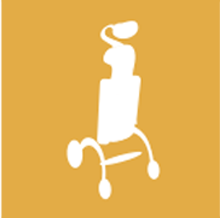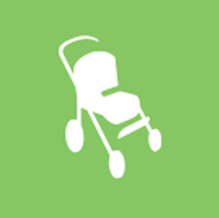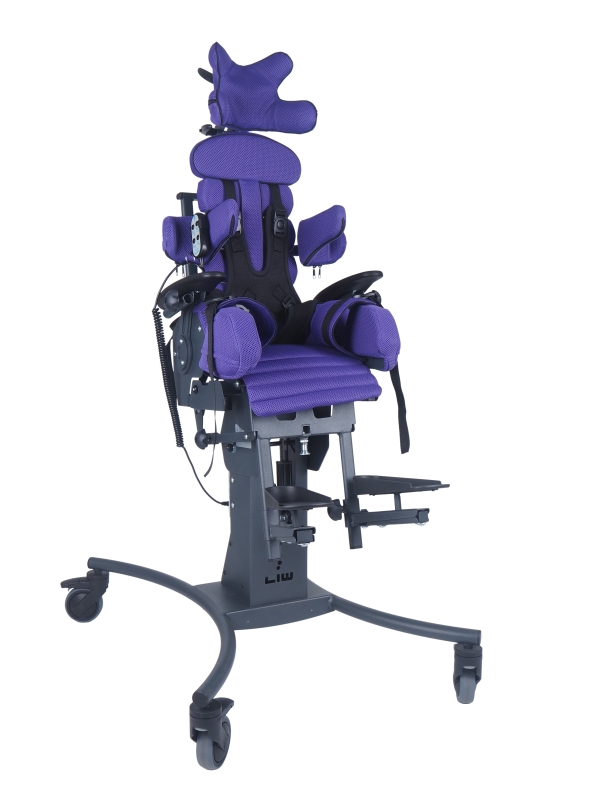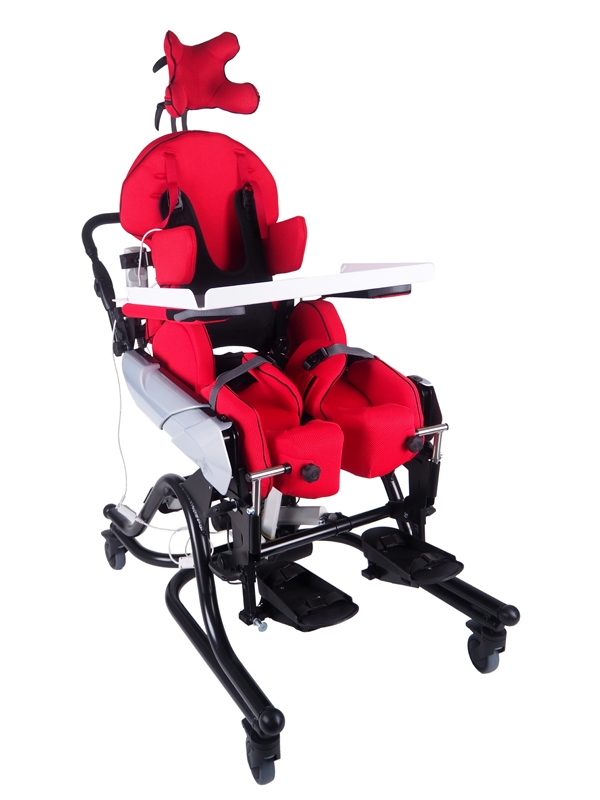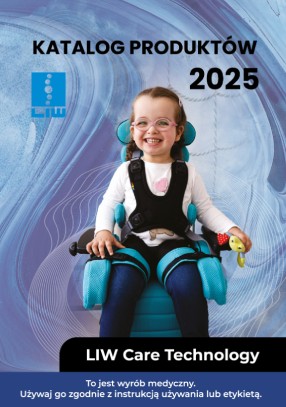Multifunctional devices
Multifunctional devices are the most advanced in construction and technology group of the products concerning orthopedical supply. Multifunctional devices enables correct verticalization and patient’s stabilization in lying, sitting an standing position, also concerning all the transitional positions.
The main feature of the multifunctional devices is that they join the function of the advanced stabilizing seat and stander frame. Additionally all the features of the device are to be controlled by the remote, which in plenty cases stands as a only possibility to independently verticalize the disabled person in home conditions.
Crucial features of the multifunctional devices
The proper choice of the multifunctional device to the anatomical condition of the user is the key for gaining the best therapeutical outcomes.
Goals that can be reached with well-fitted multifunctional device:
1. Verticalization – reaching the proper straight position of the body
The main advantages of the verticalization is its positive influence on the blood system, respiratory system and digestive system of the human. Proper verticalization is reinforcing the bones (through improving those mineralisation), improving the muscles functioning (through stretching the contractions) and prevents them amyotrophy. Moreover, proper position stimulates the nervous system.
Verticalization brings also psychological profits. Given the standing position, patient has the opportunity to know the world around him/her better, and it’s because of verticalization easing the receival of the sight and hearing impulses. Verticalization also helps improving the eye-hand coordination, as well as improve hand functions. Verticalization improves the control over the head of the user, which supports the process of learning language skills, and develop the speech ability. Moreover, verticalization enables the interaction of ‘face to face’ between parent and a child.
In the rehabilitation process with the need of verticalization, it is crucial to eliminate the pathological patterns and habits. The key factor of the therapy process is to create new habits which will be as close as possible to the right ones. Assumedly those should not allow the pathological motor activity to develop. That is why it is so important to start the verticalization even from the 10th month of life.
Given the proper verticalization, the hard work effects provided by physiotherapists are being strengthen, and the improper movement patterns during the gaps between the upgrading process. Complex rehabilitation means crucial cooperation between doctors, physiotherapists and parents of the child.
The complex rehabilitation knowledge is crucial during the process of choosing and then using the right multifunctional device for the patient.
Each patient is highly individual with the disease he/she suffers. This is why the rehabilitation with the use of special equipment can never be based on schemes! The kind of device, its dimensions and parameters of the rehabilitation should always be individually attuned to the patient.
2. Positioning and stabilisation in sitting position – gaining the proper body position while sitting.
Proper positioning in sitting position, should always involve:
- Keeping the head and thorax in forehead line, so the back and back of the head will be held in one line.
- Stabilization of head and shoulders, which has influence on: sight focus, ability to make an eye contact, development of the concentration of attention and improves the control over speech. Shoulders should be positioned in slight protraction.
- Straighten of the thorax, safeguarded with proper side supports, protecting from loosing the stabilized position.
- Backrest should be adjusted with the angle of 90 degrees from the seating surface, with additional option to adjusting the back to keep the neutral position of the shoulder girdle, head and flexion in the hip joint.
- Pelvis should be stabilized the way, to the aitchbone will touch the back part to prevent the pelvic retroversion.
- The seat’s depth adjusted ell to safeguard the thighs and keep the hip joints and knee joints in the angle of 90 degrees.
- Separating the lower limbs with the use of the abductor or abduction belts (which is recommended), if the patient’s showing the tendency for adduction.
- Feet placed flat on the platform with the option to comfortable fastening them in one line with the knee joints.
- Adjustable hight of the footrest, so the thigh is placed with all its surface on the seat, and feet are placed in adjusted for those distance from each other following the thighs placement.
3. Ease of use and accessibility to transitional positions
Multitude of the issues accompanying sole attempts of changing the position and verticalization in home conditions is almost unlimited. Unfortunately, very often it can lead to stopping the therapeutical effects gained by patient and it is no surprise. It is not easy process to place the patient of 180cm hight and 80kg heavy to standing position…
It is the exact reason, why the multifunctional devices has been designed the way enabling one single person easy changing the position of the disabled person. All the functions of the position changing are regulated with the use of remote control – which provides smooth placing the patient in required in particular moment position.
Additionally, the construction of the device’s frame guaranteed the possibility of moving from point A to point B in the home conditions, as well as in the hospital.
4. Who is the addressee of the multifunctional devices:
The multifunctional devices are mostly used in following disease entities:
- Cerebral palsy
- Muscular dystrophies
- Paralysis of various origins
- Spina Bifida
- Meningeal Hernias
- Conditions after Spinal Injuries
- Conditions after Craniocerebral injuries
- Post-stroke conditions
- Posture defects, in particular scoliosis of the spine, when no other care is used.

 Polski
Polski  English
English 

